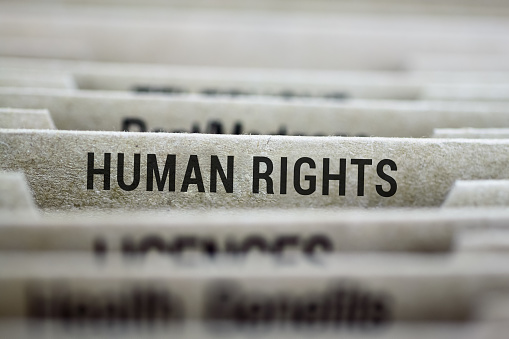Introduction
2025 has begun and we are all witnessing the first developments and changes resulting from political decisions made last year. Recently, right-wing parties and news channels have been instrumentalizing citizens’ fear of foreigners ignoring the fact that we all have the same human rights. We must question everything and be careful not to fall for fearmongering and shock journalism. Often, the terms “migrant” and “refugee” are used as one – is that correct? No!
What is the difference between migrants, asylum seekers and refugees?[1]
The term migrants is not defined in international law and refers to individuals who move away from their usual residence, either within a country or across an international border, temporarily or permanently, for a variety of reasons.[2] It might be a combination of several reasons or a single one, such as poverty, economic opportunities, lack of access to education or family reunification.
In contrast, persons seeking international protection (also known as asylum seekers) are individuals seeking a country’s protection according to its individualized procedure.[3] Not every person seeking international protection will be granted international protection, which includes refugee status or subsidiary protection status, depending on whether they fulfil the requirements.[4]
Among others, a refugee is defined as an individual who, “owing to well-founded fear of being persecuted for reasons of race, religion, nationality, membership of a particular social group or political opinion, is outside the country of his nationality and is unable or, owing to such fear, is unwilling to avail himself of the protection of that country; or who, not having a nationality and being outside the country of his former habitual residence as a result of such events, is unable or, owing to such fear, is unwilling to return to it.”[5].
Additionally, a person beneficiary of the subsidiary protection status is an individual who does not fulfil the requirements for refugee status but there are substantial grounds to believe that the person would face the risk of being a victim of torture, or other cruel, inhuman or degrading treatment if returned to their country of origin or former habitual residence in case of a stateless person.[6]
Why is it important to distinguish between migrants and refugees?
One important factor is their legal protection and rights. The right to asylum (also known as international protection) is a human right and was introduced by Article 14 of the Universal Declaration of Human Rights (UDHR).[7] Beneficiaries of international protection are protected under international treaties, especially the United Nations Convention relating to the Status of Refugees of 28th July 1951 (the 1951 Refugee Convention) and its 1967 Protocol.
While there are international treaties which explicitly address the rights of beneficiaries of international protection, this is not the case for the rights of migrants and the term “migrant” is not universally defined as mentioned. The right to migration is not regulated as a human right, but the UDHR establishes the right to freedom of movement in Article 13 of the UDHR stating “(1) Everyone has the right to freedom of movement and residence within the borders of each state. (2) Everyone has the right to leave any country, including his own, and to return to his country.”. Nevertheless, all migrants have the same human rights as everyone else!
Another aspect is that different laws apply within a country. For example, in Germany, the “Asylgesetz (AsylG)” applies to persons seeking international protection and those granted such status, while the “Aufenthaltsgesetz (AufenthG)” applies to migrants.
However, migrants, persons seeking international protection and beneficiaries of international protection status are vulnerable situations. Additionally, it is crucial to consider their individual situation, for instance, in the case of children, women, survivors of gender-based violence, indigenous people or individuals belonging to the LGBTIQ+ community.
What does it mean that all migrants are equally entitled to the same human rights as everyone else?
It means that migrants are entitled to the same 30 human rights stated in the UDHR from 1948 as everyone, such as the right to equality (Article 1), freedom from discrimination (Article 2), right to adequate living standard (Article 25), right to education (Article 26).[8] For example, Article 25 of the UDHR states “(1) Everyone has the right to a standard of living adequate for the health and well-being of himself and of his family, including food, clothing, housing and medical care and necessary social services, and the right to security in the event of unemployment, sickness, disability, widowhood, old age or other lack of livelihood in circumstances beyond his control. (2) Motherhood and childhood are entitled to special care and assistance. All children, whether born in or out of wedlock, shall enjoy the same social protection.”.
Final message
In short, let’s be clear and distinguish between migrants, persons seeking international protection and beneficiaries of international protection. It is important to not just see the terms and differences but also to recognize the commonality: we are all humans who were just born in different places and under different circumstances and nothing more. Everyone has the same human rights and from now on, we as the international community, along with the politicians, have the opportunity to advocate for the respect and fulfilment of everybody’s human rights.
[1] For more information on the right to asylum and the recognition of international protection see https://africanlegalstudies.blog/2024/03/01/seeking-asylum-is-no-crime-and-neither-illegal/
[2] Ref. International Organization of Migration, Key Migration Terms, https://www.iom.int/key-migration-terms accessed 15/12/2024.
[3] Ref. Art. 2 (a) of the Directive 2011/95/EU.
[4] Ref. International Organization of Migration, Key Migration Terms, https://www.iom.int/key-migration-terms accessed 15/12/2024.
[5] Article 1 A (2) of the 1951 Refugee Convention.
[6] Art. 2 (f) of the Directive 2011/95/EU.
[7] Ref. African Legal Studies Blog, “Seeking Asylum Is No Crime and Neither Illegal”, https://africanlegalstudies.blog/2024/03/01/seeking-asylum-is-no-crime-and-neither-illegal/ accessed 05/01/2025.
[8] Ref. Amnesty International, “Universal Declaration of Human Rights”, https://www.amnesty.org/en/what-we-do/universal-declaration-of-human-rights/ accessed 15/01/2025.
